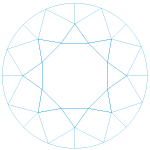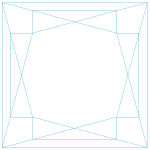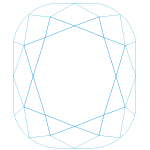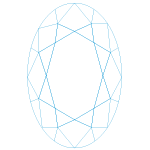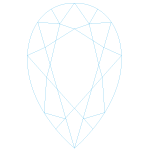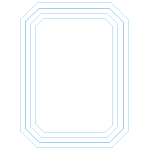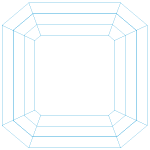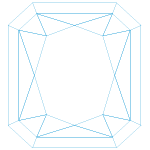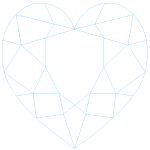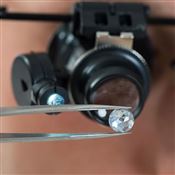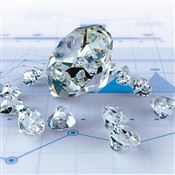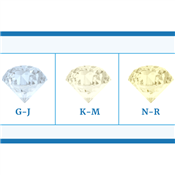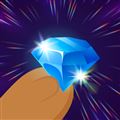Diamond Cut: What You Need to Know for Maximum Sparkle
Diamond cut is the single most important factor to consider if you want a sparkly brilliant diamond. Read on.
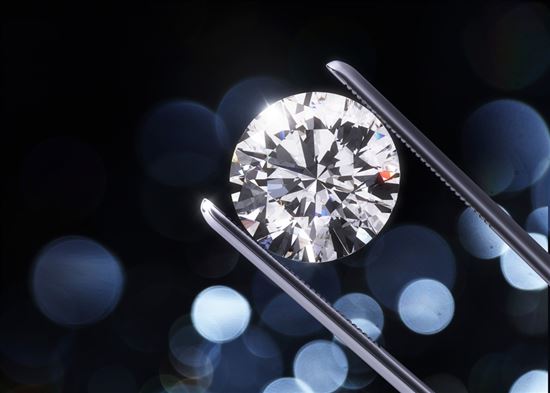 |
Diamond Cuts
"I want a dull looking diamond"... said nobody ever.
Of course everyone wants the sparkliest diamond possible. But sadly, this is also where a lot of people make a costly mistake.
Many people think that a more colorless diamond or a more flawless diamond will sparkle more. But in fact, it all comes down to the cut of the diamond.
Cut is the most important factor, and you should never skimp on it.
In this article, we're going to explain exactly what cut is, why it's so important, and what you should be looking for.
In this guide:
- Diamond Shape vs Cut
- What Is Cut and Why It's So Important
- An Ideal Cut Makes the Diamond Appear Larger
- Ideal Proportions for Maximum Bling
- Using Idealscope to Understand Light Performance
- Price Differences Between Cut Grades
- Where to Buy an Ideal Cut Diamond
Diamond Shape vs Cut
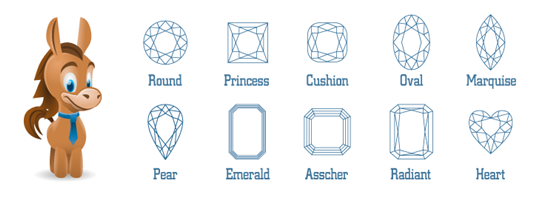 |
| © CreditDonkey |
The term "cut" is often used to talk about the shape of a diamond (such as "round brilliant cut" or "princess cut"). But shape refers to the form of the diamond, while cut refers to how the diamond's proportions reflect light.
Each shape also has its own unique shine and affects how sparkly the diamond is. So let's first briefly go over the 10 most popular diamond shapes.
List of Most Popular Diamond Shapes:
- Round Brilliant Cut
![]()
The round brilliant cut will always be the most popular and classic shape. The round diamond is beloved for its unmatched brilliance and beauty.
- Princess Cut
![]()
Edgy yet still delicate, the princess cut is perfect for the trendy girl. It also has intense sparkle and looks good in just about every setting.
- Cushion Cut
![]()
This "pillow cut" has softly rounded edges for a romantic look. Cushion cut is quickly becoming one of the most popular cuts and looks good in a lot of settings. Though one thing to note is that it's not as brilliant as other cuts.
- Oval Cut
![]()
Oval diamonds are great for those who want to stand out a little. They look larger than round diamonds and also make a woman's finger seem longer and more slender. They're cut in the same pattern as the round diamond, so they're very close in terms of brilliance.
- Marquise Cut
![]()
The marquise cut football-shaped diamond appears the largest of all cuts. The long shape is also flattering on short fingers.
- Pear Shaped
![]()
Also known as the teardrop diamond, the pear cut is a cross between the round and marquise. It's a unique, beautiful cut that looks especially good in a halo setting.
- Emerald Cut
![]()
The ultimate vintage cut, an emerald diamond exudes old-world glamour. Unlike the multi-faceted brilliant cuts, this step-cut diamond isn't known for sparkle, and should be enjoyed for its luster and clarity instead.
- Asscher Cut
![]()
The asscher diamond can be seen as a 21st-century update to the emerald. It's square-shaped and more sparkly. Ideal for the girl with vintage tastes, but also with modern flair.
- Radiant Cut
![]()
Combining the best of a few cuts, the radiant diamond exhibits fierce sparkle. Because of its cropped corners, it's also a good choice for active girls who prefer a square or rectangular shaped diamond.
- Heart Shaped
![]()
Who else but for the hardcore romantics? A heart shaped diamond is best set as a solitaire to speak for itself.
You may also hear "cut" in terms of the cut technique. This means the way the diamond is cut to form facet (or surfaces) patterns. Here are some popular terms you may come across:
- Brilliant cut: This pattern is cut in a way for the maximum light return through the top of the diamond. Usually, this refers to the classic round diamond. The modern brilliant cut has 57 facets.
- Modified brilliant cut: This refers to other shapes cut in the same pattern as the round brilliant cut. The modified brilliant family includes: oval, pear, marquise, and heart. Since they're in the same pattern as round, they're very close in terms of brilliance.
- Step cut: This type of cut has "steps" running down the sides and on the top. There's a large open window on top that's like peering into a hall of mirrors. This type of cut is not very sparkly, and shows off the beautiful quality of the diamond instead. Emerald and asscher diamonds are both in the step cut family.
- Mixed cut: In this cut, usually, the top (crown) is cut in the pattern of a brilliant cut, and the bottom (pavilion) is cut in the pattern of a step cut. This gives the diamond sparkle while keeping more weight. Princess, cushion and radiant diamonds are mixed cuts.
- Rose cut: This is a vintage cut with a flat bottom and a domed top. Face up, it looks like a rose bud. While a beautiful name, the rose cut is not known for brilliance. It was developed before modern cutting techniques.
What Is Cut and Why It's So Important
Cut is one of the 4Cs of a diamond (cut, carat, color, and clarity). These characteristics determine the quality and value of a diamond. Cut makes the biggest impact on the brilliance and beauty of a diamond.
A rough diamond has no shine. Instead, a diamond sparkles so much because of how it's cut and how light bounces off each angle and facet. Cut refers to the proportions, symmetry, and polish of the diamond. Together, these affect the visual beauty and how much sparkle we see.
In a well-cut diamond, the light will enter from the top, bounce around, and exit again through the top. This returns almost all light into the viewer's eyes.
On the other hand, a poorly cut diamond will leak light and therefore seem dull.
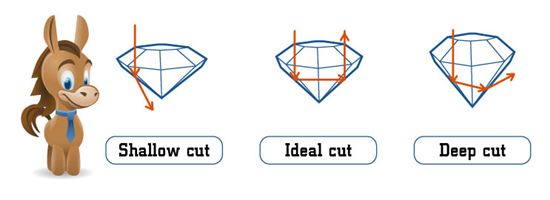 |
| Diamond Cut Scale © CreditDonkey |
A perfectly-cut diamond will have the most ideal proportions (explained later) and excellent symmetry and polish. Each facet is precisely cut so that the light can reflect back to the viewer in just the right way. This means that the diamond will give off the most brilliance, fire, and scintillation.
Unlike color or clarity (which are natural qualities of a diamond), cut is solely based on the craftsmanship of the cutter.
Examples of How Cut Quality Affects Beauty
Below, we have examples of diamonds of different cut qualities (Good / Very Good / Ideal / TrueHearts) on James Allen. You can easily see that the better the cut, the more beautiful the diamond.
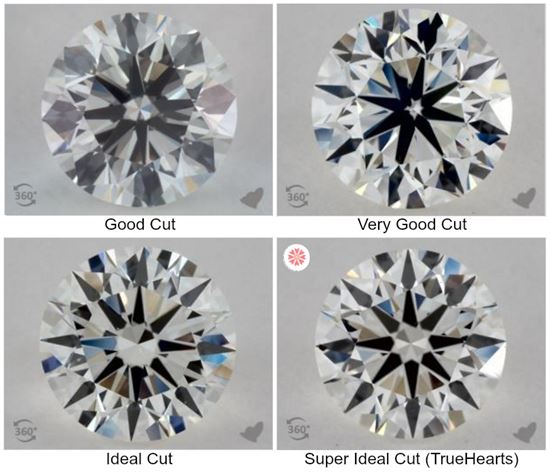 |
| Screenshot from James Allen Website |
Even the most colorless and flawless diamond will be wasted if the cut is poor.
For example, take a look at the pictures below. Which diamond looks better to you?
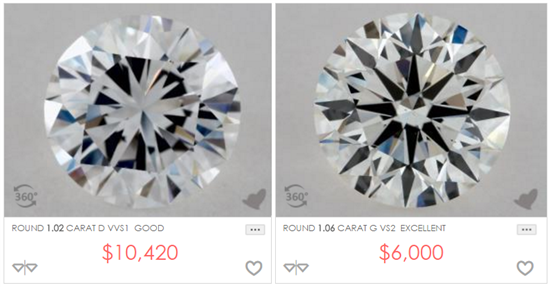 |
| Screenshot from James Allen Website |
The diamond on the left is completely colorless (D) and virtually flawless (VVSI). And yet because of the poor cut, it doesn't look good. The diamond on the right is near colorless (G) and very slightly included (VS2). But because of the excellent cut, it's a beautiful diamond that will sparkle.
For almost $4,000 less, it's clear which is the better choice.
And another huge plus: a well-cut diamond is literally so sparkly that it hides inclusions and masks slight color. This means you can save money in color and clarity. This article offers a detailed guide to buying a diamond for the best value.
Search for Ideal Cut Diamonds
An Ideal Cut Makes the Diamond Appear Larger
Or rather... an ideal cut makes the diamond the right size for its carat weight.
Because you see, diamond cutters have a lot of pressure to cut stones as large as possible from a rough. Especially to hit a desirable carat weight (such as 1 carat) in order to fetch the highest price. Sadly, this means that a lot of diamonds are cut for maximum weight instead of for maximum brilliance.
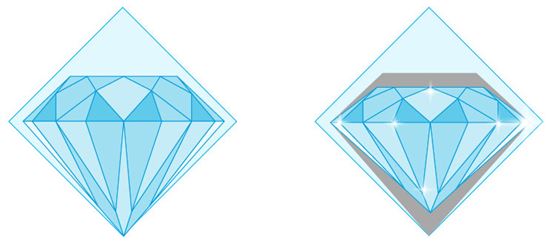 |
| © CreditDonkey |
The diagram above shows how a rough stone can be cut in two ways. It can either yield a deep diamond with a heavier carat weight, or a smaller ideal-cut diamond. Can you see how much of the weight is wasted on the deep cut? And yet, both diamonds are the exact same size face-up.
Let's look at this example:
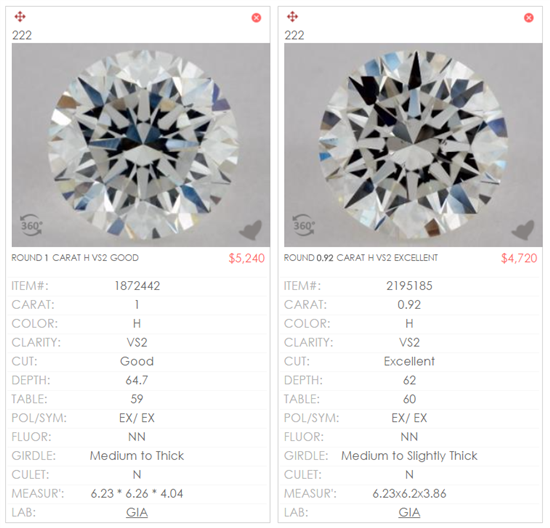 |
| Screenshot from James Allen Website |
- The diamond on the left is 1.00 carat and has a "good" cut. The surface area is 6.23x6.26mm.
- The diamond on the right weighs in at 0.92 carats and has an "excellent" cut. The surface area is 6.23x6.2mm.
In other words, the two diamonds have the same surface area. Face-up, they are both look the same size. But because of the poorer cut of the first one, about 10% of the carat weight is wasted on the deep cut. It hits the coveted 1-carat mark, but it's not going to sparkle as much.
For about $500 cheaper, the smaller diamond on the right is a much better buy.
This is why you should not place so much importance on carat weight. What's the use of having weight where you can't even see it? And no one wants a lackluster diamond.
Search for Ideal Cut Diamonds
How Diamond Cut is Graded
Diamond cut is graded based on their light performance and optical beauty. But not all jewelers and labs have the same standards. To make sure your diamond is graded accurately, we only recommend diamonds with GIA or AGS certificates. These are the two largest labs with the most consistent, high standards.
Cut is given the following grades by GIA/AGS:
| GIA | AGS |
|---|---|
| Ideal (0) | |
| Excellent | Excellent (1) |
| Very Good | Very Good (2) |
| Good | Good (3 - 4) |
| Fair | Fair (5 - 7) |
| Poor | Poor (8 - 10) |
Note: Only round and princess cut diamonds are given a cut grade by GIA and AGS.
AGS tends to have a more rigorous cut grading system. AGS's top grade of 0 Ideal has higher standards than GIA's top grade of Excellent.
When giving diamonds a cut grade, the lab will take scans and analyze many factors:
- The overall proportion and symmetry of the diamond's cut pattern
- The polish on the surface of the diamond
- The diamond's weight compared to its face-up size
- The light performance of the diamond (how it reflects light, if it has dark areas, etc.)
- The white light and rainbow light reflections
Super ideal and Excellent diamonds will reflect almost all the light back (meaning super sparkly), while Poor diamonds will leak a lot of light. In our opinion, even if a diamond is graded "Good", it's not good enough for engagement rings.
We recommend a cut grade of Excellent if you can, or at the minimum, a Very Good if you truly can't afford it. Don't go down any more. It's better to go down in color or clarity if you're on a budget.
Ideal Proportions for Maximum Bling
You can either trust the GIA or AGS grading reports. Or you can do a bit of homework yourself by looking at the proportions.
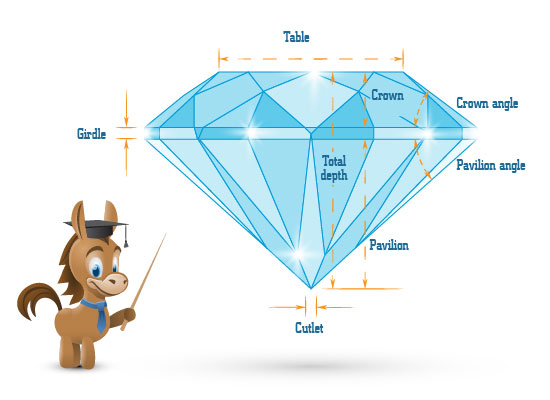 |
| © CreditDonkey |
For reference only - here are proportions you should look for in a well-cut diamond.
| Table Percentage | 53% - 58% |
|---|---|
| Depth Percentage | 59% - 62% |
| Crown Angle | 34 - 35.5 degrees |
| Pavilion Angle | 40.6 - 41 degrees |
| Pavilion Depth | 42.5 - 43.5% |
| Girdle Thickness | Thin - Slightly Thick |
| Culet | None |
| Symmetry | Very Good - Excellent |
| Polish | Very Good - Excellent |
All these measurements and angles work together to reflect light back into the viewer's eyes. It's just physics.
Now, let's explain the terms:
- Crown is the top part of the diamond (the part you see).
- Pavilion is the bottom part of the diamond (the part you don't see).
- Table is the flat surface on top of the diamond. The table percentage is the width of this compared to the entire width.
- Depth is the height of the diamond from top to bottom. The depth percentage is the height compared to the total width (or diameter). A small depth percentage means the diamond is too shallow, while one that's too big means the diamond is too deep.
- Pavilion depth is the height of the pavilion (the bottom part) compared to the total width. Again, too low means the diamond is too shallow, and too high means it's too deep.
- Culet is the very bottom tip of the diamond. In a well-cut diamond, it should be a perfect point. Sometimes, this is cut into a very small facet. If it's too large, then light can pass through it. Or it can be seen from the top and look like a flaw.
- Girdle is the edge that divides the crown and the pavilion. You don't want it to be too thin because it'll be easy to chip. You also don't want it to be too thick because then weight is added where you can't see it.
- Symmetry is basically what it sounds like. Everything should be nice and centered and all facets should be the same and in line. This affects light performance, because if a facet is slightly out of place, it can completely misdirect the light. You'll want a grade of "very good" or "excellent".
- Polish refers to the smoothness and shine of the finished surface. You also want a grade of "very good" or "excellent" for this.
Using Idealscope to Understand Light Performance
Yes, you can use dimension charts to gauge how well cut a diamond is. But the best way is to study Idealscope and/or ASET images.
Both Idealscope and ASET measure light performance by showing you areas of light leakage and light return. We'll give you a brief lesson on how to evaluate these images.
Here are Idealscope and ASET images of a diamond that shows a bit of light leakage (images from Whiteflash diamonds):
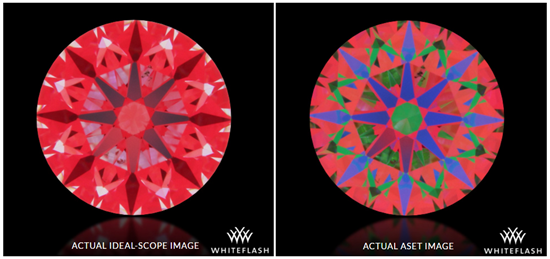 |
| Screenshot from Whiteflash Website |
And compared to a super ideal diamond with perfect light performance:
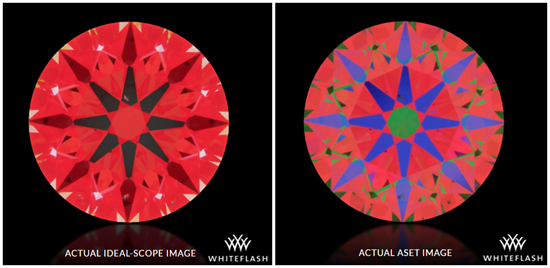 |
| Screenshot from Whiteflash Website |
A CUT ABOVE®
In a nutshell, here's what you're looking at:
For the Idealscope images (on left), the amount of light return is shown in red. You can see that the center of the first diamond has a lot of white, which means light leakage. The super ideal cut diamond, on the other hand, is all red. This means that all light is returned to the viewer (i.e., super sparkly).
The ASET image (on right) pretty much shows the same thing. It provides more information than the Idealscope. But for the normal person, you only need to know that you want as much red and green as possible. In the case of the first diamond, light leakage is represented by the dark areas.
These images truly reveal everything. So don't trust a jeweler's word unless you can see proof.
Price Differences Between Cut Grades
Price-wise, here's an example of what the differences between cut grades look like. All diamonds are 1 carat, have color of H and clarity of VS2.
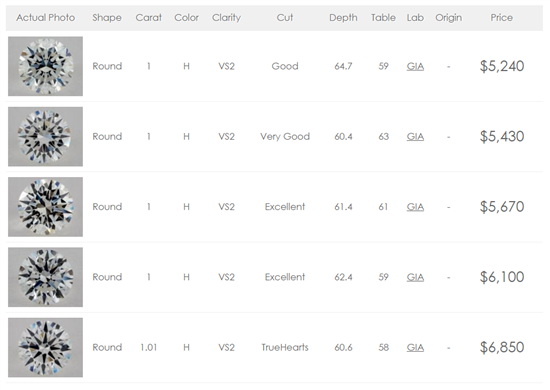 |
| Screenshot from James Allen Website |
It is quite a jump to the "excellent" cut (and even more to super ideal - what James Allen calls "TrueHearts"). But in our opinion, this extra money is well worth it, as the difference in quality is very visible. If you're working on a tight budget, go down grades in the other areas before you go down in cut.
Where to Find Ideal Cut Diamonds
A high-quality cut is the hardest of the 4C's to find. Only about 3% of the world's diamonds are ideal cut, simply because most diamonds are not cut for beauty and maximum brilliance.
If you're buying from a jeweler, be very careful if they claim the diamond is ideal-cut. Only trust it if the diamond has been certified by GIA or AGS. And if the jeweler refuses to show you Idealscope or ASET images, then stay far away!
If you're shopping online, we've got our most trusted suggestions for where to shop for ideal cut diamonds.
- Whiteflash A CUT ABOVE®: Whiteflash is our favorite diamond retailer for high-quality cut. They have one of the largest inventory of ideal cut diamonds in the world. They are especially known for their signature A CUT ABOVE® super-ideal cut diamonds. These are their hearts & arrows (H&A) diamonds that have received perfect ratings in light performance, symmetry, and polish.
Whiteflash also offers a great Expert Selection. This contains diamonds that just didn't quite make it into the A CUT ABOVE® line. This is where you can find a high-quality diamond for a more budget-friendly price.
Each of Whiteflash's in-house diamonds comes with light performance and H&A imagery upfront. So you can be confident in your purchase.
- James Allen True Hearts: This is James Allen's line of hearts & arrows diamonds. The selection is somewhat limited, but their user-friendly website is unmatched when it comes to diamond shopping online. Their True Hearts diamonds all come with Idealscope and H&A imagining.
Or if you've got your eye on another diamond, you can request up to 3 Idealscope images for free. This way, you can compare and see which has the best light performance.
- Brian Gavin: All Brian Gavin diamonds are cut to the most exacting standards for the best light performance. It offers super ideal diamonds in round, princess, and cushion cuts. The unique thing about Brian Gavin is that it has several product lines to suit every budget. For example, it offers diamonds with fluorescence or warm toned diamonds. This allows you to buy a high-quality diamond on a smaller budget.
Bottom Line
The cut of the diamond is the single factor that makes the largest impact on appearance. Even the most colorless and flawless diamond will look dull if the cut is poor.
So we highly suggest that you prioritize cut above all else - even above carat weight. Don't try to skimp here. Instead, save your money in the color and clarity areas, as an excellent cut will mask color and hide flaws. And everyone wants their diamond to sparkle.
Write to Anna G at feedback@creditdonkey.com. Follow us on Twitter and Facebook for our latest posts.
Note: This website is made possible through financial relationships with some of the products and services mentioned on this site. We may receive compensation if you shop through links in our content. You do not have to use our links, but you help support CreditDonkey if you do.
|
|
|
